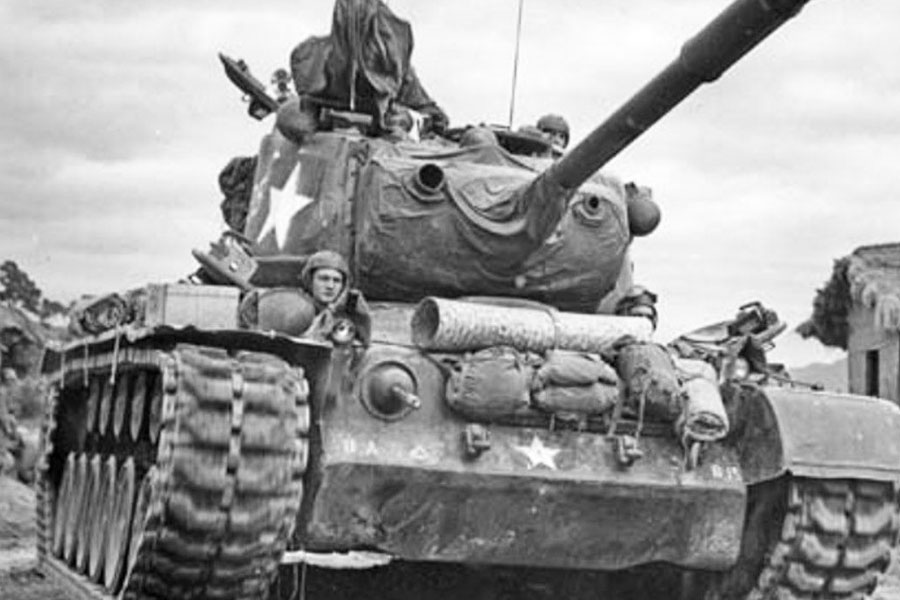The M26 Pershing was a heavy/medium tank of the United States Army. The tank was named after General of the Armies John J. Pershing, who led the American Expeditionary Force in Europe in World War I. It was used in the last months of World War II during the Invasion of Germany and extensively during the Korean War.
Intended as a replacement of the M4 Sherman, a prolonged development period meant that only a small number saw combat in Europe, notably in the 9th Armored Division. M26 Pershings dashed to take the Ludendorff Bridge during the Battle of Remagen. The Battle of Remagen during the Allied invasion of Germany resulted in the unexpected capture of the Ludendorff Bridge over the Rhine. The battle for control of the Ludendorff Bridge caused both the American and German forces to employ new weapons and tactics in combat for the first time. Over the next 10 days, after its capture on 7 March 1945 and until its failure on 17 March, the Germans used virtually every weapon at their disposal to try to destroy the bridge. At 3:50 pm, 10 minutes before they believed the Germans were scheduled to blow the bridge up, the guns of Company A, 14th Tank Battalion, drove the German defenders from the bridge road surface and from the stone piers of the bridge. In addition, the tanks engaged the flak guns on the east bank which were opposing the crossing. The tanks successfully provided fire support to the infantry and suppressed fire from the German positions.
After capturing the Siegfried Line, the 9th Armored Division of the U.S. First Army had advanced unexpectedly quickly towards the Rhine. Based on the criteria of firepower, mobility, and protection, American historian R. P. Hunnicutt ranked the Pershing behind the German Panther medium tank, but ahead of the Tiger I heavy tank. In service during the Korean War, the M26 had better firepower and protection than the T-34-85, but struggled in the hilly and muddy terrain. It was withdrawn in 1951 in favor of its improved derivative, the M46 Patton, which had a more powerful and reliable engine and advanced suspension better able to handle the terrain. The lineage of the M26 continued with the M47 Patton, and was reflected in the new designs of the later M48 Patton and M60 Patton.








